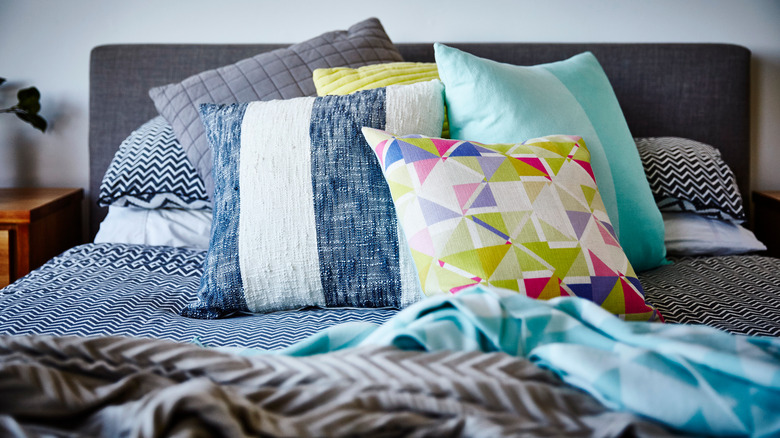HGTV's Emily Henderson Shows You How To Put Some Pattern In Your Home Decor
If you always gravitate towards solid-colored decorations at the store, you may have a difficult time including patterns in your space. However, patterned pieces are necessary to avoid a boring or cold design, as they add texture, interest, dynamics, and a cozy atmosphere that really makes a home come alive. Luckily, there's hope for those who have trouble with patterns, as Emily Henderson has an important tip on how to add them to your home.
Henderson says to focus on including patterns in small ways. Instead of using something large like wallpaper or an area rug, add smaller elements such as throw pillows and blankets, vases, candles, and trays. A huge benefit of using these minuscule pieces is that they're fairly inexpensive and easy to replace if you grow to dislike them in the future. They will also make more of a visual impact than you might imagine. Additionally, don't think they need to feature something loud like a floral design, as simple stripes, a woven piece, or a checkered look can still pack a punch.
How to mix patterns
When pairing together patterned pieces, it's important that they all feel cohesive with one another. "Mixing patterns can be overwhelming ... You can either mix way too many patterns [or] too many colors," making your space appear chaotic and overstimulating. On the other hand, "If you do it right, then you'll end up looking like somebody that's just effortlessly chic," Emily Henderson says via YouTube. To create the right look, limit yourself to only using three or four colors in the space. Also, mix the scale, or the size, of the patterns, and if two of them look too similar, replace one with either a larger or a smaller scale.
Further, only use three to five different patterns in a space, and pair them with solid-colored items that fit within the established color palette. Finally, space out the patterned elements so that every corner of the room has equal visual weight. An extra tip? If you love a patterned tile but are unsure where to include it, Henderson recommends installing it on the floor. This is because, unlike eye-level walls, the floor is less noticeable, so it won't appear as loud.

